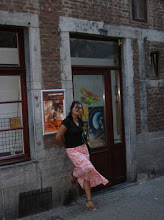Do you fancy trying the Chinese foot spa?
In most of Manila’s little beauty parlors (it has an overabundance of them, even the barangays deemed most in need of rice has at least three), the Chinese foot spa is one of the newest offerings heavily advertised on their shop windows. Swedish hot baths, Thai massages and French manicures are classic hits in the parlor scene; thinking that anything foreign defining a service is always going to pick up good, gay parlor owners have introduced the Chinese foot spa.
I don’t know what makes the Chinese foot spa different, and I don’t intend to try. To me, the “Chinese” in the foot spa makes it a little bit icky, even scary. Will they rub my feet with salt and tausi sauce? Will they crush star anise against my soles and soak them in Lee Kum Kee? Horrors, will they further kill the skin that make up my bullions and corns with formalin? Or worse, will they bind my size-ten feet in metal?
Pandolino committed the same mistake. To name its packed pieces of sweet bread, Pandolino just changed the first letter of a school-shoe brand and plastered the new, inventive mark on its food product. Do many buy Pandolino? Certainly not, because even when customers haven’t tried these yet they are sure that the breads would taste like boots.


